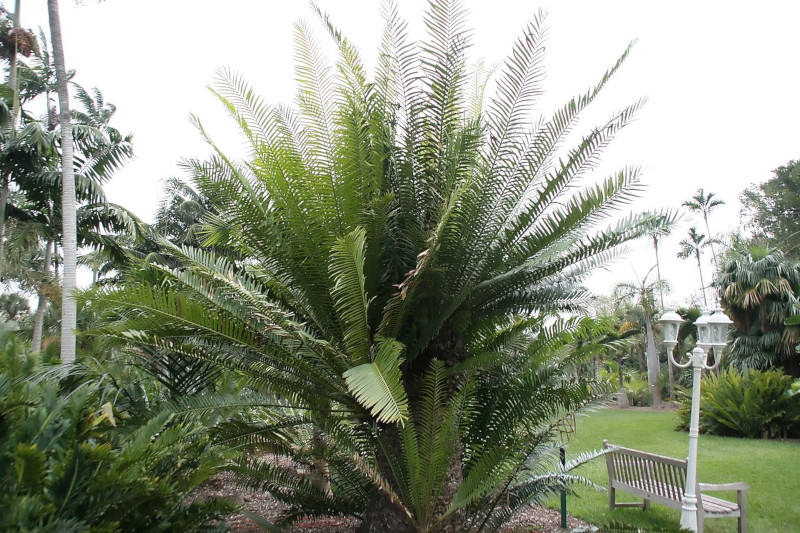
Muhure Facts
- Surprisingly, the comparatively simple term of Muhure serves as the common name for a truly extraordinary variety of cycad. Its scientific name, however, remains that of the moderately difficult to pronounce technical term Encephalartos whitelockii.
- Regardless of which term one uses to refer to it, though, this fascinating flora remains a subject of great concern among many conservation minded individuals. The fortunate discovery and recognition of this plant occurred only in recent times, however.
- The impressive species also bears its scientific name in honor of Loran Whitelock. This singular occurs in appreciation of his highly extensive research into various cycads. Quite unfortunately, though, the known population of Muhure remains very small.
- In point of fact, estimates place the number of surviving specimens at fewer than 8,000 plants. Since this fact remains true, along with other factors, the IUCN presently lists the amazing Muhure as Critically Endangered. This appears on its Red List.
- For the moment, its greatest threats appear to be comprised of two specific, but sometimes related, factors. For one, it remains especially vulnerable to habitat loss. Not only that, but climate change also poses a severe threat to its continued existence.
Related Articles
Muhure Physical Description
The incredible Muhure has an impressive nature that goes far beyond mere physical size. This holds true given the fact that it manages to amaze the viewer despite one limiting factor. That’s the fact of its not being an overly large variety of flora, compared to some.
That’s because mature specimens of this extremely rare and startling cycad only attain a maximum height of approximately 13.1 ft (4 m). Most specimens, however, remain somewhat smaller than this. Moreover, this height displays itself in remarkable fashion.
That’s due to the fact that each plant produces a number of erect stems. These grow from a short base, relatively close to the ground. Each of these features further measures about 15.75 in ( 40 cm) in total diameter, and most commonly develops small in clumps.
Each of these remarkable stems further possesses numerous long, thin leaves. These parts of the plant themselves also grow to as much as an incredible 13.5 ft (4.1 m) in length. Further, this unique foliage also has a light green color, and slightly serrated on the edges.
The astonishing Muhure also possesses yet another distinctive characteristic to set it apart. Unlike many similar plants, this one produces both male and female cones. Though obviously not unknown, it nonetheless remains a moderately uncommon trait.
Distinctively, the male cones, of which it produces 1 -5, attain an average length of 19.7 in (50 cm), and 3.5 in (9 cm) in diameter. Meanwhile, it develops 1 -3 female cones, which reach an average length of about 17.7 in (45 cm), and a diameter of roughly 13.8 in (45 cm).
- Kingdom: Plantae
- Phylum: Tracheophytes
- Class: Cycadophyta
- Order: Cycadales
- Family: Zamiaceae
- Genus: Encephalartos
- Species: E. whitelockii
Muhure Distribution, Habitat, and Ecology
Unfortunately, the amazing Muhure inhabits an extremely limited, and in some ways harsh, habitat range. That highly regrettable statement holds true because of the fact that this marvelous form of cycad appears to exist in only one known, small location in the world.
More precisely, that area consists of the southwestern section of Uganda, on the continent of Africa. However, even there the Muhure has a severely restricted zone of habitation. It lives along the banks of the Mpanga River, before its outlet near Lake George.
It limits its presence even more specifically, however. This occurs given the knowledge that the species also only appears within a certain range of altitude. That extremely restrictive habitat range also happens to extend from 3,280 – 4,265 ft (1,000 – 1,300 m) above sea level.
There, it only grows on rocky slopes and sheer granite faces. This small area where the Muhure appears consists of high grasses amid a savanna, and a dense evergreen forest. This species of flora achieves its pollination via a combination of insects and the wind itself.
A fairly wide variety of native animals also feed on the outer coat. These species subsequently leave the seeds behind, where some of them later germinate. Finally, however, many of the seeds are consumed entirely, being a popular food source for baboons.
Species Sharing Its Range
Check out our other articles on Magnificent Mammals of Australia, Spinner Shark, Gorges du Tarn, Green Dragontail, California Sea Lion, Black Rain Frog, Heartleaf Foamflower, Flatback Sea Turtle
